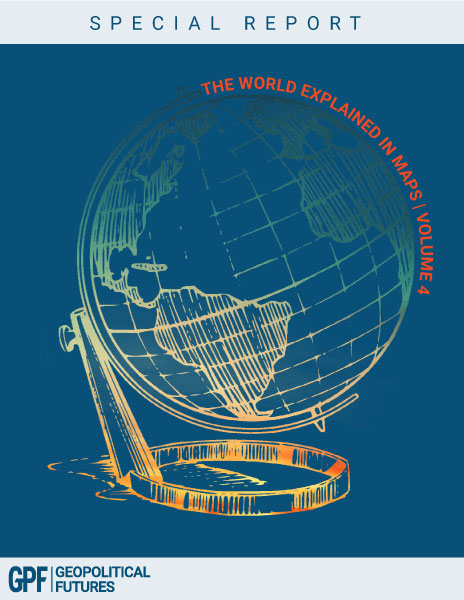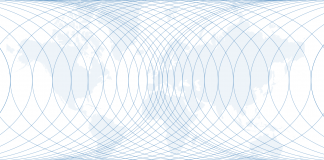We have been operating with a model of Russia. Having lost its non-Russian territories with the breakup of the Soviet Union, Russia is missing the buffers that protected it. Its national imperative is to recover those border states, either formally or informally. They could be either occupied by Russian forces or, at the very least, governed by native governments that exclude the presence of Western powers and coordinate with Moscow. The Russians achieved this in the South Caucasus through diplomacy and the stationing of Russian peacekeepers in the region. They have been increasing their power in Central Asia. But the critical region for Russia is in the west, facing Western Europe, the United States and NATO. There, the loss of Belarus and Ukraine posed a critical problem. The eastern border of Ukraine is only about 300 miles (480 kilometers) from Moscow, and Ukraine is allied with the United States and European powers, informally if not as part of NATO.
Russia’s strategy to this point had been to avoid direct military intervention against hostile forces and use hybrid measures to build influence and gain control. This is what happened in the Caucasus. This is also what happened in Belarus, where a contested election left President Alexander Lukashenko in a weak position, and Moscow used its power to assure Lukashenko’s position and control events in Minsk. The surge of refugees toward the Polish border put Poland on the defensive and created a sense of crisis in Poland. As for Belarus, it was simply the arena chosen by Russia, a satellite taken softly.
As Russia was reclaiming its buffers, we turned our attention to Ukraine, which, as I said, is the key buffer. It is vast, it threatens Russia directly, and from Ukraine, Russia could threaten the West as well. Indeed, between Belarus on the North European Plain and Ukraine’s control of the Carpathian Mountains, Russia could not only defend itself but also threaten an attack on Europe from the Baltic to the Black seas.
The Russians mobilized forces along Ukraine’s borders – from the east, north and south – and, without making overt threats, created a situation in which an invasion of Ukraine seemed possible. I wrote last week doubting that the Russians would try a complex occupation of a hostile country because the possibilities of failure, even against minimal resistance, were real and because the Russians could not predict American actions. If it intervened, the U.S. would likely intervene on land, but it also possesses arsenals of anti-tank missiles launched from air or ships in the Baltic and Black seas. How this conflict would evolve is unknown, and the United States might not choose a military counter. But Russia could not know this, nor could it risk acting on intelligence, which is frequently mistaken.
For the Russians to complete rebuilding the Soviet Union, they have to first neutralize the United States without military action. The best strategy for this is to neutralize NATO, whose military forces are limited but still significant. More important, an American response to Russia without the availability of NATO territory, and without the political backing of NATO allies, would complicate the military and political dynamic of U.S. action. The U.S. had already indicated its caution by threatening the Russian banking system if there were a war in Ukraine, rather than threatening military action.
Therefore, before Russia even considered military action in Ukraine, it had to neutralize the (already cautious) U.S. politically, and the key to that was to paralyze NATO and particularly Germany. Germany sees Russia as a crucial source of energy, a trading partner that might grow in significance, and a problem to be avoided. Even more important to it is Europe, of which NATO is a crucial element – not so much as a military force, but as another force holding Europe together. As the dominant power in Europe (outside of Britain), Germany has a national imperative to maintain its dominant economic position, which gives it major influence on the behavior of the Europeans on military matters.
For Germany, a war would therefore not suit its needs. It would risk a conflict that could severely weaken Europe’s economy at a delicate moment. Germany sees Poland as a difficult problem since it is in NATO, but Poland’s posture toward Russia does not suit Germany’s interests. Germany would of course like a buffer against Russia in Belarus and Ukraine, but not if it means massive economic cost and increasing American power in Europe. The U.S. dominates NATO, and an extended conflict would maximize American military considerations and minimize German economic concerns. In short, while there may be an array of positions on Russia’s moves in Europe, Germany, the leading power, needs to avoid war and will pay a price for this. Russia’s neutralization of the United States leads through NATO, Europe and particularly Germany. If they have divergent views, a unilateral American defense against Russia becomes very risky.
Thus, we get to the extraordinary document that Russia delivered last week. The document is targeted at NATO. The key clause is Article 5: “The Parties shall refrain from deploying their armed forces and armaments, including in the framework of international organizations, military alliances or coalitions, in the areas where such deployment could be perceived by the other Party as a threat to its national security, with the exception of such deployment within the national territories of the Parties.”
In other words, Russia is demanding the right to limit the deployment of U.S. troops in NATO countries if the Russians feel threatened by that deployment. The immediate effect would be that, while Poland could build its strength, the U.S. would have to withdraw from Poland if Russia felt threatened, which it says it does. Of course, if the Russian Federation reintegrated former Soviet territories within its political system, which I think is a possibility, then Russia would be freed from Article 5.
There are other clauses that guarantee the United States will reject the document. It is therefore an interesting question why the Russians crafted it. It may be designed as a negotiating platform, but it is too skewed to the Russian interest to be a workable platform for Washington. Another possibility is that it is for domestic Russian consumption, showing that Russia speaks to the U.S. as a powerful equal to be respected. Or it might be that after the Americans’ initial response to Russian threats – that their banking system would be hurt – the Russians read the U.S. as unwilling to respond in Ukraine.
The key from my point of view is that no one wants a war in Ukraine because it would be long and bloody, and the geographic advantage would go to Russia. A proposal on the table, regardless of how preposterous, can give cautious nations an opportunity to capitulate while appearing to prefer a diplomatic course to irrational military responses. Much of Europe is unwilling to fight for Ukrainian independence. The United States, concerned with the free spread of Russian power through military force, might choose an intervention. This proposal might well be seen in Europe as a “basis of discussion,” limiting American options.
An invasion of Ukraine would be filled with risks for Russia. Failure or prolonged resistance would turn Russia from a reemerging power into a nation to be discounted. Russian President Vladimir Putin obviously knows this document will be rejected, but within its context, rejection will get back to counteroffers, and it is possible that NATO and the U.S. will give some ground in exchange for scrapping some of the egregious Russian demands. Or Putin wants everyone to see this in terms that are not mentioned – as an ultimatum – and to panic.
In any case, the key piece of Russian reconstruction – Ukraine – is on the table, and the document so completely confuses the issues, by demanding fundamental shifts in how the U.S. operates, that something may be conceded under European pressure. Putin has nothing to lose from this document and something to gain. I would assume the American response will be to refuse talks based on the document.






